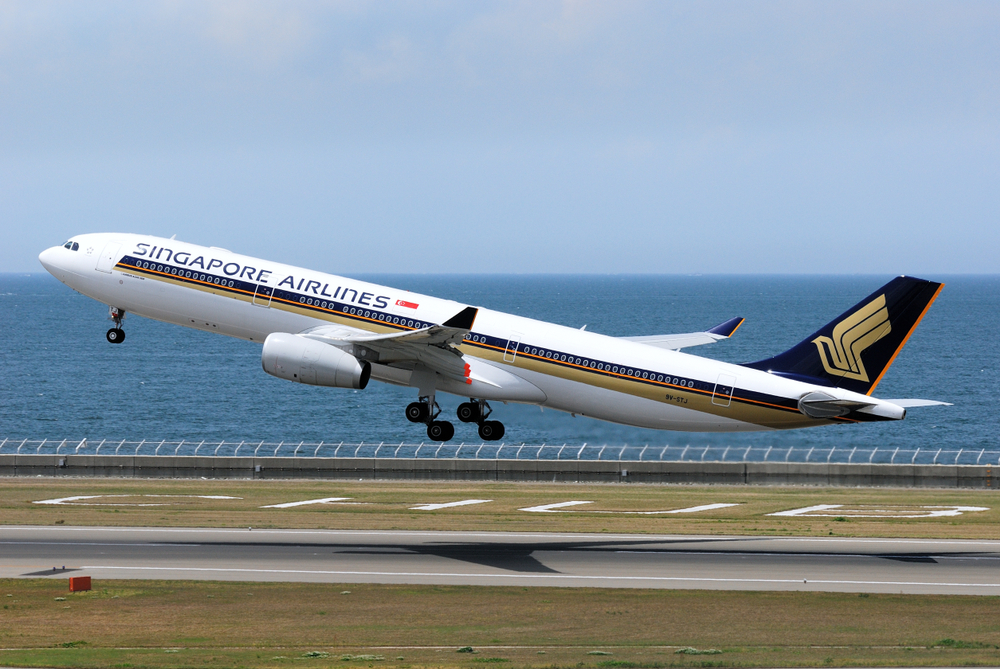Singapore Airlines posts its first loss in 48 years
Contributors are not employed, compensated or governed by TDM, opinions and statements are from the contributor directly

The year that airline business was decimated by the COVID-19 pandemic, Singapore Airlines, reported a record full-year net loss of SGD 4.27 billion (USD 3.21 billion).
In what SIA called its “toughest year in history”, revenue for the financial year which ended March 2021, fell SGD 12.16 billion (USD 9.14 billion) or 76.1 per cent year-on-year to SGD 3.82 billion. At an operating level, the Group lost SGD 2.51 billion in FY2020/21 versus a gain of SGD 59 million in the prior reporting period. Net loss was SGD 4.27 billion against a loss of SGD 212 million in FY 2019-20.
With airlines grounding their fleets around the world early last year due to the fast-spreading of COVID-19, this is the first full operating year for SIA where the debilitating effects of the coronavirus on air travel were felt in their entirety. With no domestic market, and with restrictions on international travel still very much in place, passenger travel plunged by 98 per cent compared with the previous reporting period.
To cushion the impact of the dramatic decrease in passenger traffic and consequent revenue collapse, Singapore Airlines has resorted to flying cargo including using its passenger planes. Cargo revenue rose 38.8 per cent to SGD 2.71 billion and accounted for 71 per cent of revenue for the entire group during the reporting year.
SIA said in its press statement accompanying the release of the full-year results that, “Improvements in freighter utilisation, deployment of passenger aircraft for cargo-only flights, and removing seats from passenger cabins to create additional volume for cargo partially mitigated the loss of passenger aircraft belly hold capacity during the pandemic. Strong air cargo demand, especially in key segments such as e-commerce, pharmaceuticals and electronics, provided strong support for both cargo load factors and yields amid tight industry cargo capacity.”
Group expenditure was lower by SGD 9.59 billion or 60.2 per cent at SGD 6.33 billion. This was helped by capacity cuts, cost-savings initiatives, staff-related measures and government support schemes. With the reduction in flights and lower fuel prices in the first half of last year, net fuel cost decrease 78.1 per cent (SGD 3.62 billion) to SGD 1.02 billion. Non-fuel expenditure reduced by SGD 5.47 billion or 51.8 per cent to SGD5.10 billion.
Operating loss was SGD 2.51 billion with net loss ballooning to SGD 4.27 billion due to weaker operating performance and non-cash impairment charges, partially offset by a $623 million increase in tax credit due to the higher net loss recorded by the Group.
The airlines also took a mark-to-market loss of SGD 497 million on ineffective fuel hedges. This was partially mitigated by a SGD 283 million fair value gain on fuel hedges after a rise in fuel prices in the second half of the year.
During the period under review, the airline took impairment charges on 45 surplus aircraft of SGD 1.73 billion, impairment of goodwill of SGD 170 million on Tiger Airways, an airline it took control of in 2014 which was subsequently merged with low-cost subsidiary Scoot, and SGD 48 million impairment by SIA Engineering Company on maintenance assets.
With a brighter travel outlook for the later part of 2021, SIA has been expanding its network gradually, resuming services to some destination and adding frequencies to existing ones. As of March 31 this year, the entire SIA group passenger network encompassed 60 destinations including Singapore, up from 54 three months earlier. The Group’s cargo network comprised 72 destinations, climbing from 66 as of December 31.
Based on current published schedules, SIA expects the passenger capacity to be around 28 per cent of pre-COVID levels by June 2021 and 32 per cent a month later where it would attain capacity around 32 per cent of pre-COVID levels. By then, it expects to serve 49% of the points it flew before the crisis.
The airline added, “Even though mass vaccination exercises are in progress in most of our major markets, the prognosis for the global airline industry remains uncertain. While domestic markets have recovered in some countries, international air travel remains severely constrained and its recovery trajectory is still unclear.”
Despite record losses, unlike most other airlines in the region, SIA is in a strong fiscal position. In FY2020/21, SIA raised a total of SGD 14.6 billion (USD 10.98 billion) of capital through various means including rights issues, issue of convertible bonds and notes, aircraft sale-and-leaseback arrangements, and new committed lines of credit, some secured on aircraft it owns.
Already in April 2021 (post FY2020/21), it had secured an additional SGD 0.8 billion through the completion of a sale-and-leaseback transaction. It also has an additional SGD 2.1 billion committed line of credit which it has yet to draw on.
During the results announcement, the airline said that it will undertake a further issuance of additional mandatory convertible bonds to raise gross proceeds of approximately SGD 6.2 billion. Singapore government investment arm, Temasek, which owns 55% of Singapore Airlines, has provided an undertaking to pick any unsubscribed units.
Reaction from the investment market was mixed following the release of the results. Of the two brokers who revised their earnings estimates, both adjusted their one-year target price downwards but CGS-CIMB reiterated a buy call whereas UOB-KH recommended to its clients to sell the stock.


Comments are closed.